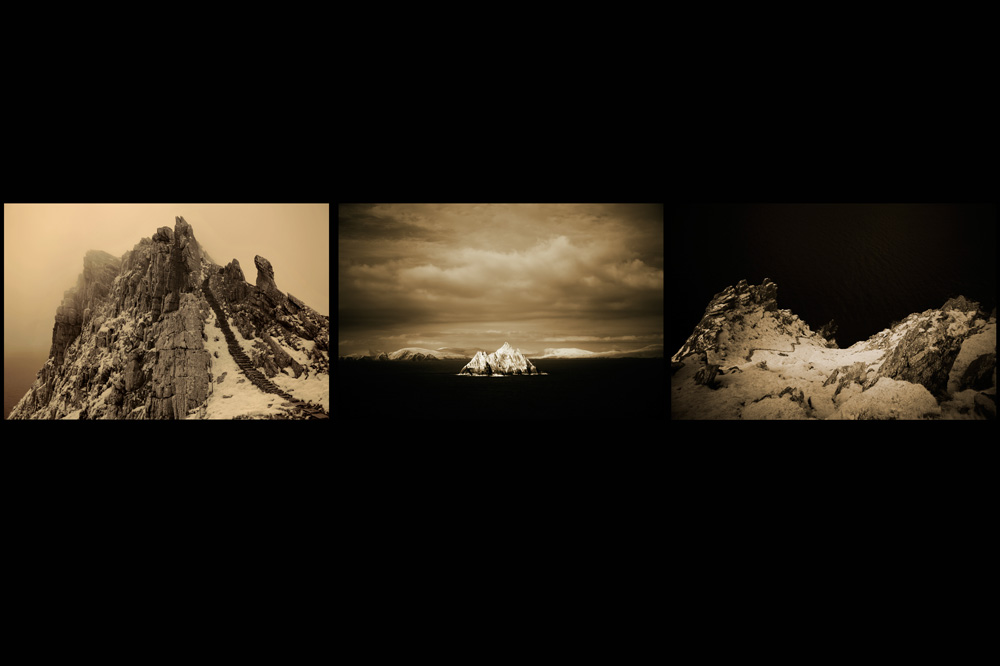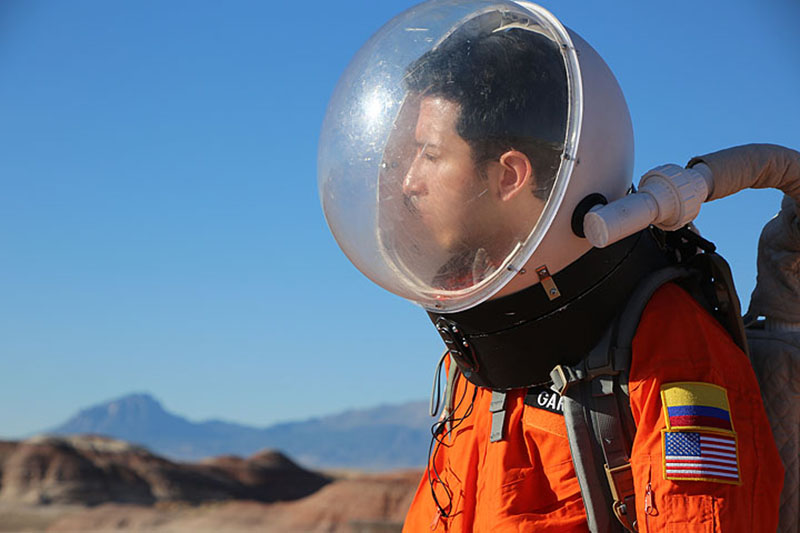ART-PRESENTATION: Reconstructing Eden
 Paul Ardenne and Barbara Polla have been organizing yearly video reviews since 2011 for showcasing the most progressive works of video art. This year the event is held in Hungary, within the framework of Art Capital. In terms of thematics, the works share in common references to the relationship between the natural and built environments, to the global effects of human interventions, as well as to the memory of Paradise Lost and the idea of creating a new Eden.
Paul Ardenne and Barbara Polla have been organizing yearly video reviews since 2011 for showcasing the most progressive works of video art. This year the event is held in Hungary, within the framework of Art Capital. In terms of thematics, the works share in common references to the relationship between the natural and built environments, to the global effects of human interventions, as well as to the memory of Paradise Lost and the idea of creating a new Eden.
By Dimitris Lempesis
The central focus of this year’s Art Capital Festival is the way modern humanity relates to nature and longs for Paradise Lost: the idea of the garden. Flowing river and fertile water (defining elements of the Biblical Garden of Eden) are important points of reference for the majority of exhibited works. The nature that we integrate into our living space by the committed and persevering cultivation of the land is also a symbol of self-created freedom. Within the framework of the Art Capital Festival, which is dedicated this year to Nature and Pathway, “RECONSTRUCTING EDEN” is a video exhibition centered on and echoing with the themes of nature, ecology, in and out of pathways, moving, driving, diving, walking, biking, flowing, sailing and finally living. The pathway through the exhibition starts with “The Film From Outside” by Frank Smith, and questions the ongoing loss of paradises on earth such as Isle Jean Charles, a narrow strip of land on the border of Louisiana, soon to disappear under the combined pressure of coastal erosion, storms, hurricanes and raising waters, together with its ancient Indian community stemming from the Houma nation. The twenty-five remaining families, the so-called “first official climate refugees of America”, face the dilemma of continuing to adapt and staying, at risk of disappearing forever, or leaving, and accepting the dispersal of their traditions, religion, language, and culture. We drive along Island Road, on this precarious territory at the edge of abandonment, between azure and tarmac, under a glorious sunlight. Shaun Gladwell’s “Approach to MUNDI MUNDI” and “55-41” by Ali Kazma, featuring himself and Paul Ardenne) are two films about the beauty of motor-biking through solitary untouched landscapes, whether in the Australian desert (Gladwell) or through multiple salvage landscapes, from Anatolia to Argentina (Kazma), whether alone, slowly embracing the world from dawn to dusk (Gladwell), or in duo, being in the world, piercing the world and being the world. The French vocal performer and winner of the 2017 “aware” award, Violaine Lochu turns to video art with “šaddat”. The artist walks alone, somewhere in Lapland, in a spiritual state of mind and we see through her eyes a succession of flies, toads, trees, barks, birds, fishes, banks, rocks, reindeer, pathways… Eden seems to exist and Lochu, as an Eve of the 2010s, cherishing the apple of knowledge without devouring it, takes us by gaze and hand to her untouched yet evolving paradise of art. Children and adult plays, both proceeding from the same desire for representing life, are at the core of Miguel Angel Rio’s video work. In “ATACHO”, mature men recall the kids inside themselves and play echo through their childhood’s mountains – the Andes. The slowly join, take all the same pathways, the same shortcuts, often steep and dangerous, and agitate paddles while walking, still convinced, as they were as kids, that their vibrations could scare their sleeping parents. For Rios, “The main objective was to gather my childhood friends in full provincial siesta to film a children’s game that we all knew… I managed to film the memory of childhood through poetry.” Reconstructing Eden could well occur by reconstructing childhood. Rios’ second video, “Untitled (the ghost of modernity)” filmed on a deserted plateau high above a distant town in Saachila Oaxaca Mexico, features a set of outlined cube structures built on site, and a transparent cube that floats through the landscape as if magically suspended. “Space Between Fragility Curves”, by Janet Biggs combines footage of a Mars simulation mission in the desert of Southern Utah with images of a Yemini refugee camp and music by and images of marimba playing Shimon Robot as he improvises music inspired by Bigg’s images. The tells us about the endless persistence of human hope in finding other places, better lives, and inventing new futures. Two videos by Clare Laganare are in dialogue with Gianluigi Maria Masucci’s “Starway to Eden (Fluire)”: “The Floating World” and “Flight from the City”, both of them created in collaboration with Icelandic composer Jóhann Jóhannsson. The Floating world immerses us in “post-apocalyptic images, shot, edited, and manipulated with technological subtleties to implore the terrible beauty of a world which seems familiar, but not yet encountered. We watch the skyscrapers of Dubai rising higher than clouds, follow a camera as it climbs the stony steps of Skellig Micheal; Mount Olympus trans-located from Greece to this remote place in the eastern Atlantic, a mystical spot once used by Monks in their search for the divine. This imagery suggests what Heidegger and the Greeks called aletheia, a place where truth reveals itsel. The works makes a perfect duo with Gianluigi Maria Masucci’s “Fluire”, a literal Stairway to EDEN. Through continuous cycles of observation-registration-elaboration-reproduction of the elements – in this case, water – Masucci builds a pathway to reconnect with nature. “Stairway to EDEN” is a site-specific installation for the space of the ArtMill, composed of a projection that flows-flies above the triangular stairs of the building combining geometrical and numerical elements that evocate the archetype of vertical “Ascesa”, as an attempt to transform our impermanence into energy. “Safe” another work by Ali Kazma is like Noah’s ark. In the very north of Norway, in the remote Svalbard Archipelago, about 1300 kilometers for North Pole, conservationist Cary Fowler started a global seed vault that contains copies of seeds held in gene banks worldwide. Safe (the title of Kazma’s video is it’ own invention) has a storage capacity of 4.5 million seed samples. If things turn bad, and survivors know about Safe, they should be able to “reconstruct” biodiversity – at least, vegetal biodiversity. In the purity of Nordic landscapes filmed by Kazma, the wind sweeps hope and doubt. Ursula Biemman’s “Subatlantic” is a visual SiFi poetry about a female scientist on a North Atlantic island who is undertaking instrumental observations in the field, around the time of the last glacial melts 12’000 years ago. She simultaneously inhabits multiple temporalities that span across millennia, slowly crafting a history that harbors a language still to be announced.
Info: Curators: Paul Ardenne and Barbara Polla, ArtMill, 2000 Szentendre, Bogdányi utca 32, Duration: 19/6-2/9/18, Days & Hours: Tue-Wed & Sat 10:00-18:00, Thu-Sat 11:00-20:00, www.artcapital.hu
![Miguel Angel Rio, Untitled (the ghost of modernity) [Video Still], © the artist](http://www.dreamideamachine.com/web/wp-content/uploads/2018/06/0120.jpg)







![Miguel Angel Rio, Untitled (the ghost of modernity) [Video Still], © the artist](http://www.dreamideamachine.com/web/wp-content/uploads/2018/06/098.jpg)

